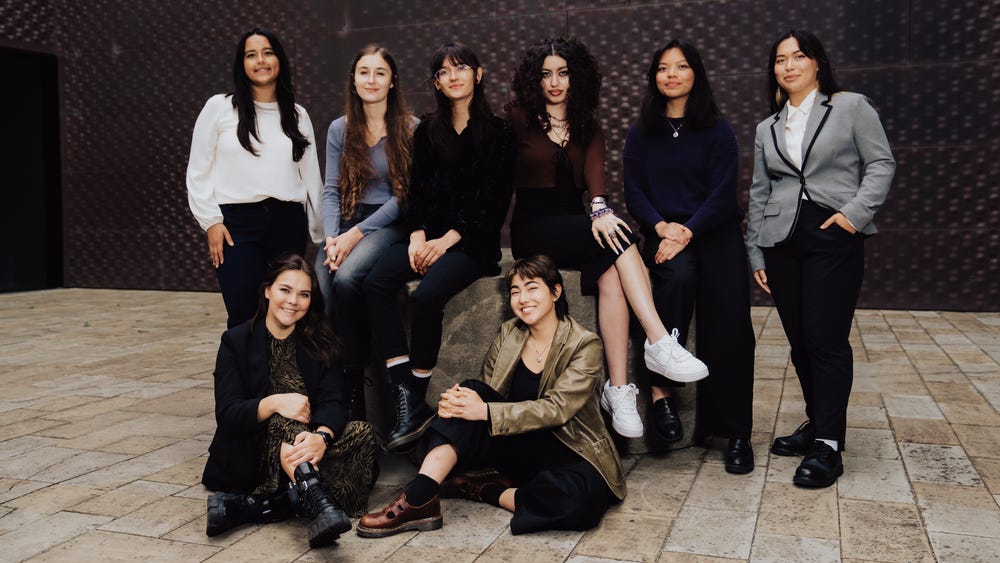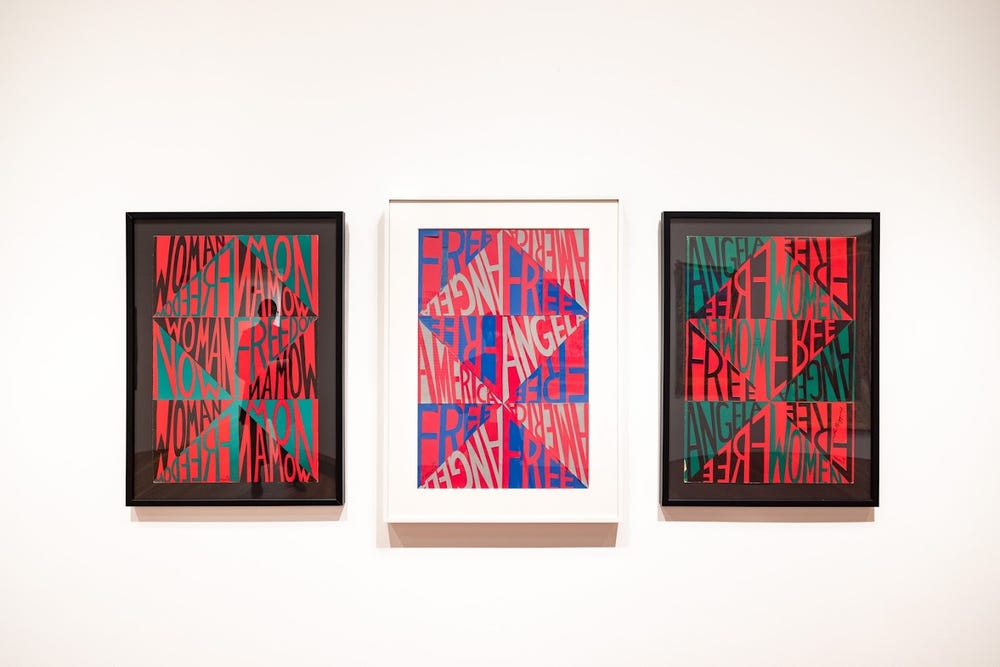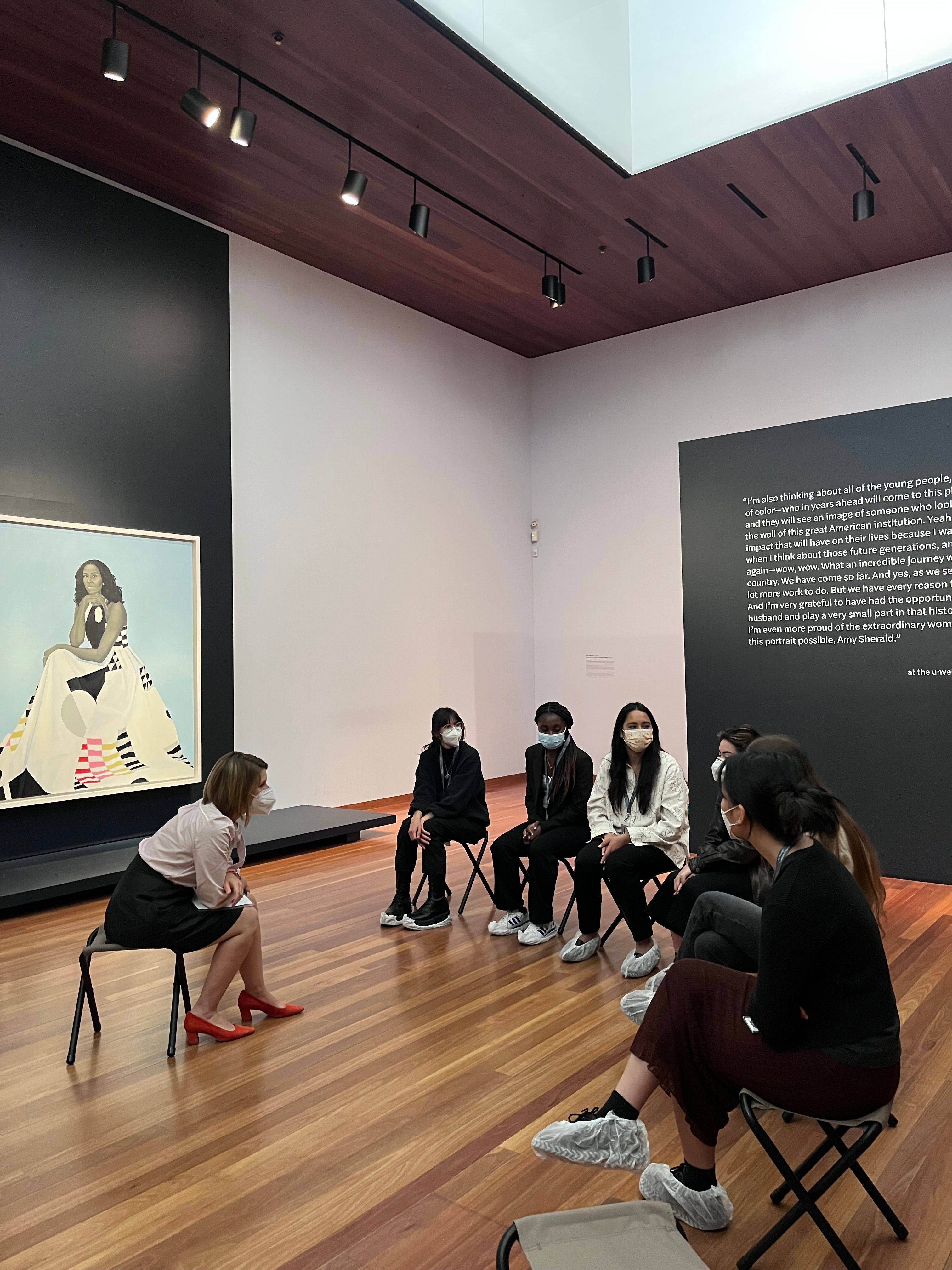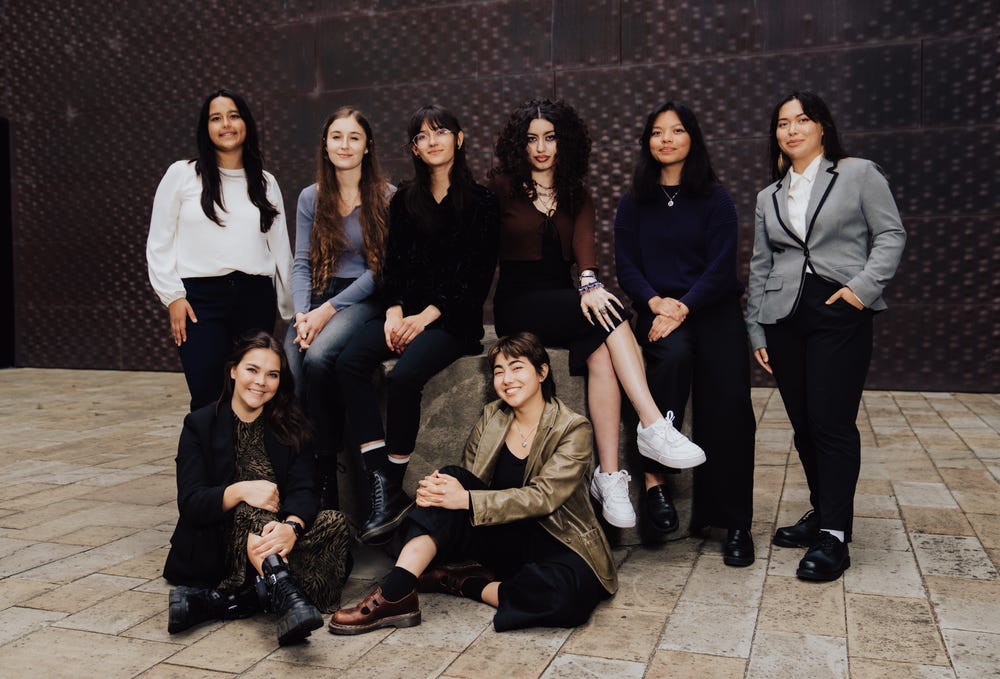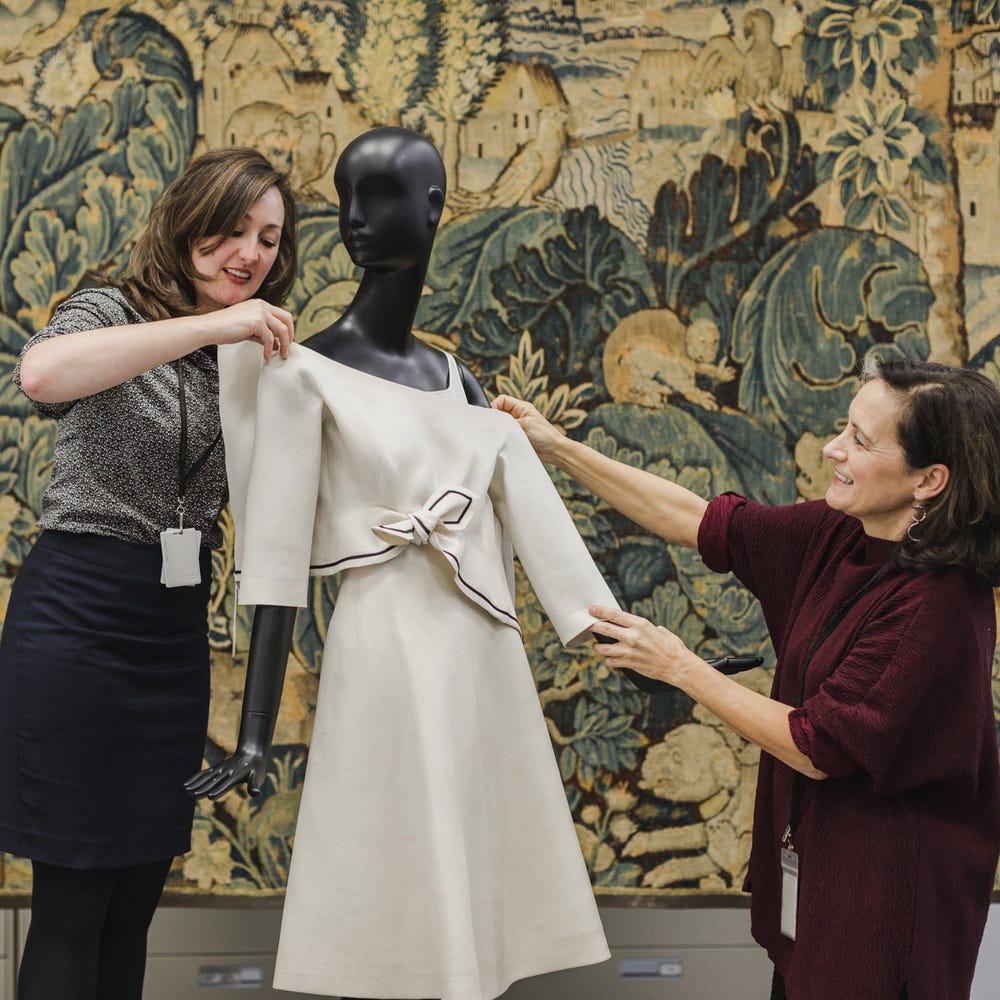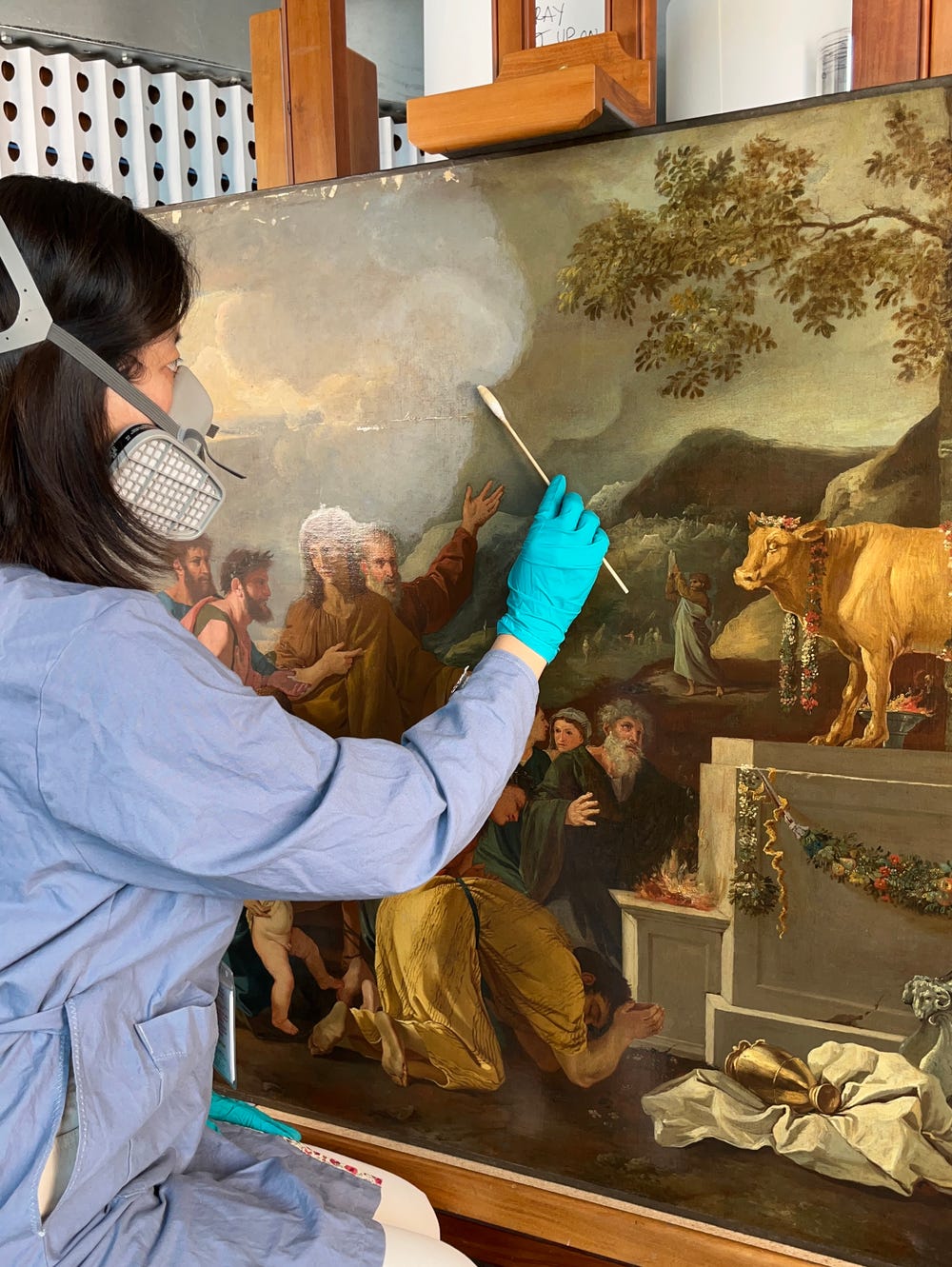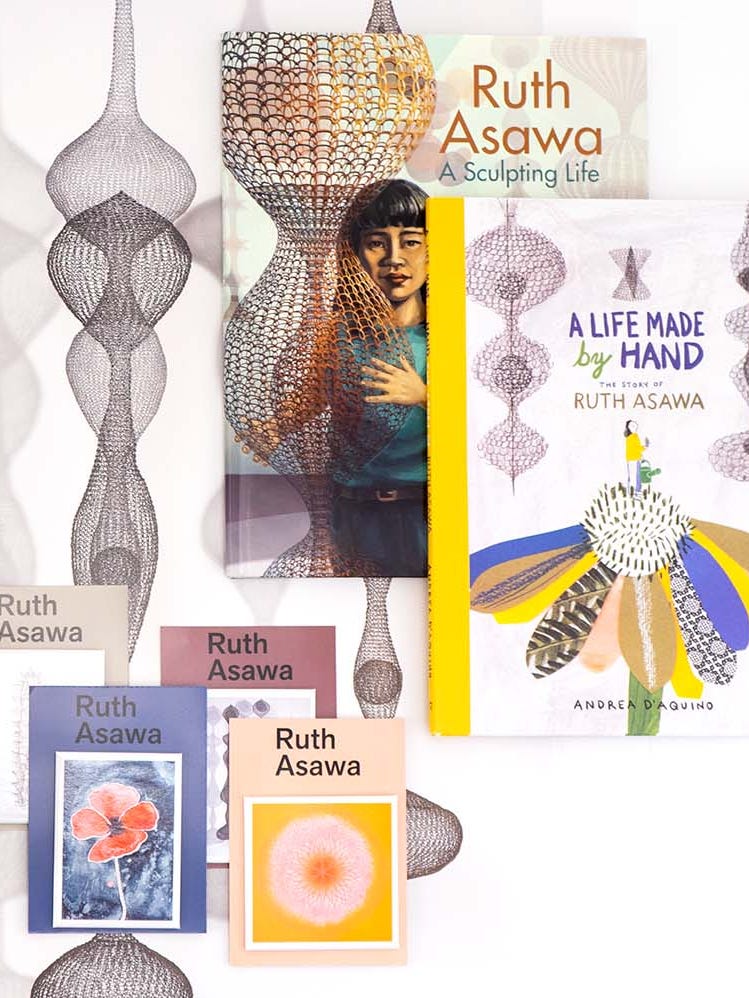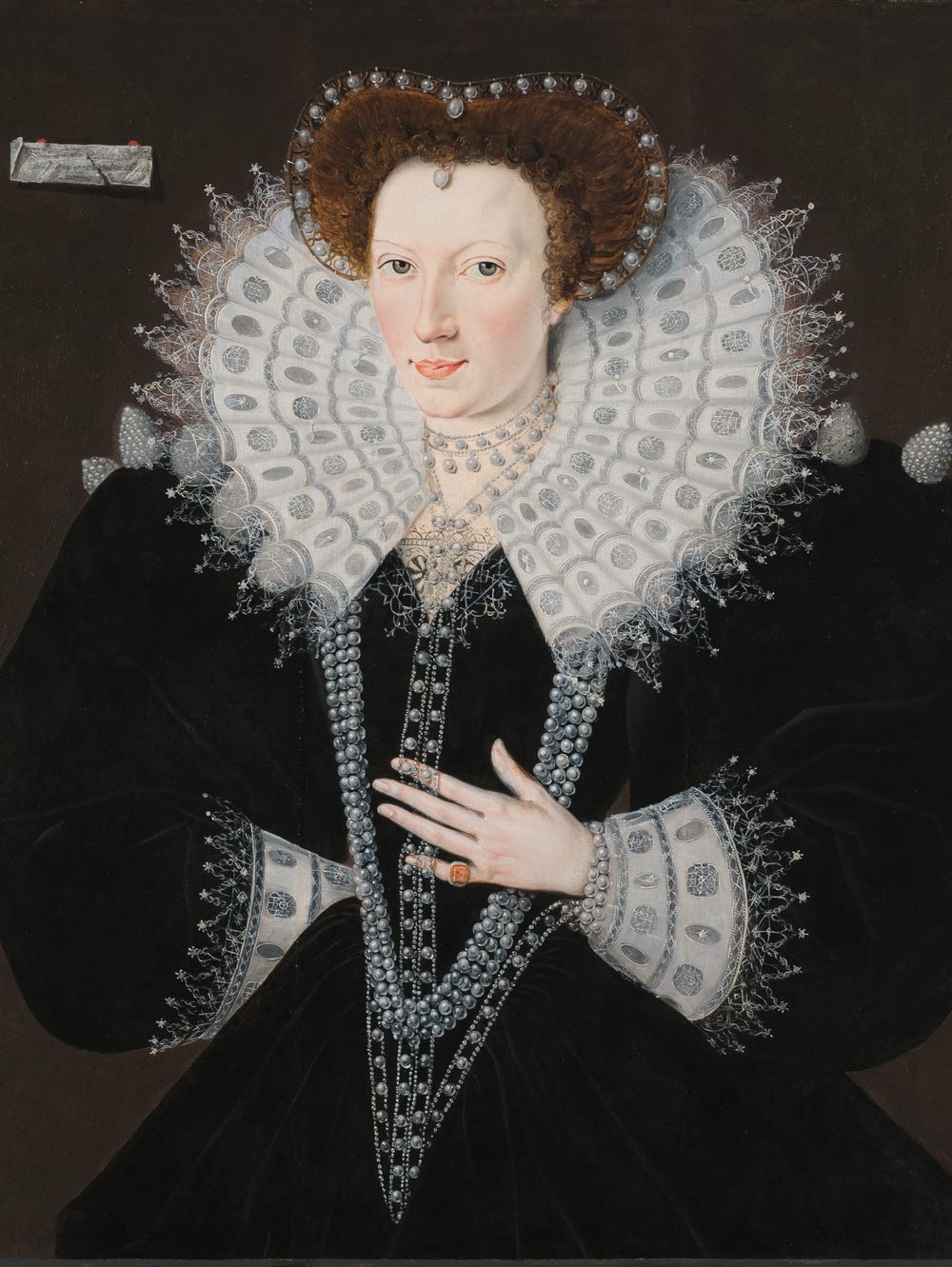2022 FAMSF summer internship cohort. Photography by Xicana Treviño
While my formal education has taught me so much, being immersed in a summer internship at the Fine Arts Museums of San Francisco (FAMSF) has given me much greater insight into what working in a professional environment entails. When I was offered the communications internship at FAMSF, I was thrilled. Along with the excitement, I couldn’t help but feel nervous too. I’m studying business at San Francisco State University, and I thought I might need more “art world” knowledge to perform well. Not only were my concerns quickly erased but the knowledge and skills I’ve been able to cultivate from this experience have far surpassed what I imagined.
What I thought PR was
On my first day, I had many preconceived ideas of what I would be doing and how exactly it would play out. I would talk to members of the press about what was going on at the Museums. The process would stop at a simple telephone call; I would ring a journalist and they would magically show up. Finding the journalists would be equally as easy. What I thought would be straightforward turned out to be a more thoughtful and deliberate process. The steps I imagined I would breeze through turned out to be challenging.
What PR actually is
We were told early on in the program that each intern would work on a big project that made a contribution to our department. My first week, I helped facilitate the press preview for The Obama Portraits Tour. Later I connected with Maria Egoavil, Public Programs project manager. From our conversation, I decided I wanted to work on a public relations (PR) campaign related to the Faith Ringgold: American People exhibition. Specifically, I wanted to support the collaborative events FAMSF was organizing with the Oakland Museum of California (OMCA) for the upcoming exhibition Hella Feminist.
Installation view of Faith Ringgold: American People, de Young museum, San Francisco, 2022. Artwork Faith Ringgold / Artists Rights Society (ARS), New York. Photograph by Gary Sexton. Image courtesy of the Fine Arts Museums of San Francisco
After I identified my big PR project, Shaquille Heath, senior communications manager, guided me along the process of pitching a media alert to members of the press. This included writing the alert, identifying press contacts, preparing a copy deck, and compiling a media list.
Putting together a list of media outlets from all over the Bay Area was much more complicated than a simple Google search. Having to compose a carefully worded media alert that draws people in taught me to think in more strategic ways, such as using wordplay to grab attention. One valuable lesson I learned is that success in media relations isn’t always measured in the short term or by whether a publication runs the story you pitched. Building relationships with publications and journalists is the real measure of success, because these connections might land you a story next time.
Reciprocal relationships
I had heard internships are where you work like a dog, where you’re given task after thankless task, sometimes learning a thing or two along the way. At FAMSF, I frequently find the opposite to be true. My opinion here holds value. I’ve been told more than once that internships are not only intended to benefit the intern but are also reciprocal relationships, with employees and the institution benefitting from my contributions. My supervisor, Internal Communications and Content Project Manager Francisco Rosas, invited me to meetings with other departments in which I was listened to when I had anything to ask or share. As much as I was looking for feedback from my supervisors, I found that this reverse feedback was also appreciated. In all my projects, my work was taken seriously. The staff who mentored me helped me realize the value and purpose I brought to the museum.
I had also assumed that in order to fit in, I had to come from a prestigious background and with particular knowledge. This assumption was quickly disproven. At the museum, I was surrounded by people from diverse backgrounds with wide-ranging ideas. Some of my new coworkers had always known they wanted to work in the museum industry, while others, such as Manager of Diversity and Inclusion Courtney Jones, found themselves doing museum work later in life. This helped calm my nerves. I gained reassurance and excitement from just talking with those around me, and from their generosity and willingness to engage in conversation. As I learned about Courtney’s career development, I took a moment to reflect on my own and realized how much the Museums had to offer.
Behind the scenes
Opportunities in the museum industry are limitless. One of the most exciting aspects of the internship was being exposed to the wide variety of roles and careers in the Museums. Throughout the program, I was constantly encountering people from different departments with roles I hadn’t known existed.
Meeting with the Exhibitions department and learning about the work that goes into an exhibition from start to finish was fascinating. There are staff members who create one-of-a-kind mounts for art objects and others who specialize in lighting an exhibition. I sat in on meetings with the Exhibitions department in which they communicated timelines of upcoming exhibitions, shared data, and created consensus with other departments. The amount of work that goes into each exhibition is considerable, requiring a lot of collaboration, care, and consideration.
Intern cohort participating in a close look of The Obama Portraits Tour with Sarah Kleiner, paintings conservator (far left). Photograph by PJ Policarpio
The other interns and I were fortunate to be shown the paintings conservation lab by Sarah Kleiner, associate paintings conservator. She introduced us to the intersection of science and art that is conservation, a profession I didn’t know existed. As Sarah led us through a close study of The Obama Portraits, using a special light, we were able to look at the paintings up close and personal and gain new perspectives on the portraits.
Diversity, equity, inclusion, and access (DEIA)
As an avid art museum visitor for many years, I’ve had one complaint despite all the beauty I’ve encountered: the lack of diverse representation. Museums I visited while growing up all seemed to have this problem. Reflecting on this, I was drawn to the changes and progress that have been made internally and externally toward making FAMSF a more diverse, equitable, and accessible place for all.
I noticed these changes in discussions around land acknowledgments, terminology, and neurodiversity. I witnessed individuals reflecting upon their own privilege and biases come together and grow from those experiences. I also saw progress in conversations about trigger warnings and hard-to-answer questions on the content of exhibitions. For my main PR project, Shaquille encouraged me to broaden the scope of my media targets to include unrepresented publications and communities.
Lastly, labels for paintings weren’t something I focused on prior to my internship. I began to notice and read through them, finding they offered clarity and proper credit to those that deserve it. Francisco explained how curators continually research, digging for more and new information on objects to establish fuller narratives, and in some cases acknowledging voices that were previously muted. Each of these changes contributes to the goal of making FAMSF more inclusive and accessible.
Last thoughts, for now
2022 FAMSF summer internship cohort. Photography by Xicana Treviño
Reminiscing on all the conversations and experiences I’ve had at FAMSF, I’m reassured. My life doesn’t have to be fully planned out yet. Witnessing institutional change, while pitching my own PR campaign to publications all over the Bay Area, I challenged my own biases and involved myself in an industry I hadn’t expected to be so receptive to. The people I met have shifted my perspective, allowing me to keep an open mind. While my time here was temporary, my new knowledge will stay with me forever.
Text by Tara Khanna, communications intern.
